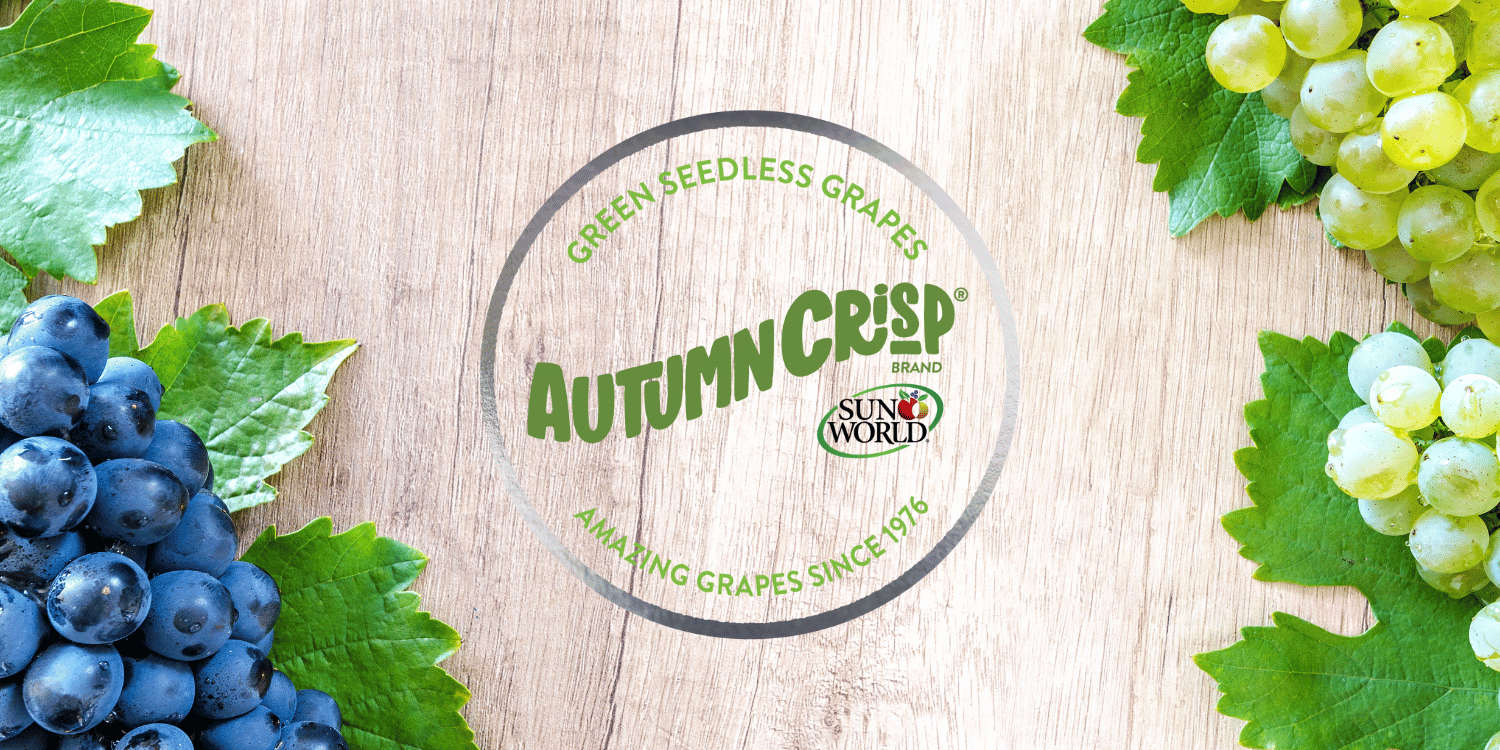The consolidation in the produce industry is a strategic trend that stakeholders must navigate with careful planning and strategic positioning.
To successfully maneuver this landscape, businesses must focus on strengthening their market presence while enhancing efficiency.
Further, companies should preemptively engage in strategic alliances and mergers, to not only survive but also thrive in a consolidated market.
Emphasis should also be placed on embracing innovative technologies for optimized supply chain management and ensuring superior product quality.
In addition, forming stronger connections with the consumer base and developing a distinct brand identity would also be beneficial in this consolidated industry.
Lastly, staying updated on regulatory changes is critical, as they can dramatically affect business operations in this consolidating industry.
- The produce industry is facing consolidation and market changes.
- Strategies are needed to increase market presence and improve efficiency.
- Strategic alliances, mergers and innovative technologies are crucial for success.
- Supply chain management, brand identity are also essential in the industry.
- Building connections with consumers and adapting to regulatory changes impact business.
While the key takeaways provide extensive insight into the consolidation wave occurring in the produce industry and its implications, the story does not end here.
In the following sections, we will talk more about analyzing important strategies and innovative technologies that can encourage growth and efficiency amidst such market dynamics.
We will also shed light on the importance of supply chain management, brand identity, customer engagement, and adaptability to regulatory shifts in this industry.
Not just that, we will also take you through various real-world examples and case studies to provide a comprehensive understanding of this complex scenario in simple terms. So stay with us as we unravel the multiple aspects of navigating produce industry consolidation.
Contents
- Navigating Produce Industry Consolidation
- Strategies for Increasing Market Presence
- How to Improve Business Efficiency?
- Importance of Strategic Alliances and Mergers in the Produce Industry
- Role of Innovative Technologies in Success
- How to Optimize Supply Chain Management?
- Why is Brand Identity Essential?
- Building Connections with Consumers
- Impact of Regulatory Changes on Business
- The Bottom Line
Navigating Produce Industry Consolidation
In Short: Produce industry consolidation represents a process where companies merge, resulting in fewer but larger entities, a scenario triggered by increased competition or the desire for expansion. This trend has both challenges and benefits, including an altered market dynamic, potential price increases, enhanced efficiency, or increased innovation, and hence, requires proper strategic and regulatory handling.
The produce industry, a important aspect of the global economy, is currently experiencing a wave of consolidation. But what exactly does this term imply?
At its heart, industry consolidation represents the process of companies merging with or acquiring other firms in the same industry. This leads to the creation of fewer but larger entities.
What triggers consolidation? Well, various factors can instigate this trend in the produce industry.
Increased competition may push companies to consolidate and strengthen their market position. Alternatively, the desire for growth and expansion might incite some firms to acquire others.
Let’s discuss a few key effects of produce industry consolidation:
- A reduction in the number of players in the market. When companies merge, the independent entities essentially disappear.
- A potential increase in product prices. Having fewer competitors generally allows remaining firms to increase prices.
- The dominance of big corporations in the market. With the financial ability to out-run smaller firms, big corporations tend to reign unabated.
However, it’s not all gloom and doom. Consolidation also brings forth a range of benefits.
For instance, consolidation can enhance the efficiency of the surviving businesses by optimizing resources. This benefits both the firm and the consumers through the provision of better products and services.
Can we ignore the potential for increased innovation? Not really. A consolidated produce firm should have more resources to invest in new products and techniques, driving further industry growth.
It would be amiss to ignore the potential of consolidation generating market power imbalances.
The scale economies the surviving entities enjoy can oftentimes block new entrants. There could be a concentration of market power in the hands of a few large entities.
How about the impact on farmers, particularly small-scale ones? They could be under immense pressure from major consolidated firms to lower their produce prices.
Let me tell you, there’s a clear need for regulatory involvement to prevent adverse impacts.
Resource and market power imbalances are potential problems in an overly consolidated produce industry. Regulatory measures could help mitigate these issues.
Navigating the waters of produce industry consolidation is no easy task. It brings about both challenges and opportunities, but with the right strategies, it could lead to a stronger, more efficient industry. Hence, it’s not an issue we can glance over in a cursory manner.
How will this consolidation trend ultimately shape the produce industry’s future? Only time will tell but it’s unquestionably a important issue warranting our attention.
Strategies for Increasing Market Presence
In Short: Increasing market presence in the produce industry involves understanding your audience, distinguishing your products, studying competitors and utilizing strategies such as exploring new markets and social media. The importance of market research, demographic-focused marketing, strategic social media use, and wisely refreshing brand identity, in a balanced manner without confusing existing customers, is crucial.
Market presence, in the produce industry consolidation, is a key factor to be addressed, and there are many strategies to help businesses flourish. However, what exactly should one focus on?
First off, understanding the audience is the key. Are your products catering to the right demographics?
Understanding your audience’s needs should be an active exercise. Have you taken actions to study their lifestyle, their purchasing behavior, their preferences?
Of course, it’s not only about understanding your audience. Acknowledging the competition is crucial too. Are you aware of your competitors’ strengths and weaknesses?
Distinguishing your product from competitors’ offerings often requires pursuing unique selling points (USPs). Do you have a clear idea of your USPs?
Below are some key strategies, that can be pursued to boost your market presence:
- Exploring New Markets: Search for untouched markets where your product could fit in.
- Maximizing Social Media: Leverage online platforms to reach out to broader demographics.
- Refreshing Brand Identity: Keep your brand updated and relevant to your target audience.
- Focused Marketing: Tailor your marketing efforts to your targeted demographics.
- Value for Money: Offer benefits to your customers that overshadow the product cost.
But remember, each strategy poses different challenges. Always keep your goals and capacity in mind while defining your strategies.
Let’s talk about this, does expanding to new markets always yield success? No, also just throwing your product into a new market area without proper research could lead to pitfalls.
Let me tell you, making use of market research to study your new markets is crucial. Have you considered this yet?
While using social media platforms, are you sure that your demographic is active there? Does your product align with the tone and content of that particular platform?
The key here is to align your efforts strategically with your audience’s preference.
Shall we consider the fact that refreshing your brand identity works only when the need arises?
Distinct look and feel of the product can attract more eyes, but an unnecessary overhaul might create confusion among existing customers.
Therefore, the idea here is to strike a balance between staying modern and not alienating existing customers.
Enhancing your brand’s market presence is not a one-size-fits-all endeavor. Are we on the same page about the need to personalize the strategies, keeping your market in mind?
Don’t forget, the produce industry consolidation landscape is full of challenges, but also opportunities. Can we agree optimism, resilience, and a well-thought market strategy are key here?
How to Improve Business Efficiency?
In Short: Improving business efficiency in the competitive produce industry involves streamlining operations, eliminating waste, adopting automation and technology, fostering a culture of continuous improvement, and outsourcing strategically. These measures enhance productivity, save time and money, promote effective communication, and drive consistent improvements in the work process.
Business efficiency, specifically in the produce industry, is key to navigating a consolidating market such as this. It is crucial to position your company in this increasingly competitive landscape.
Should we not evaluate our business efficiency from time to time? It allows us to gauge our market performance and spot areas to improve.
Improving business efficiency could mean streamlining operations. This includes improving production processes and enhancing supply chain management. Do you optimize resource allocation accordingly?
A key aspect is adopting a lean methodology to eliminate waste in your operations. Operational efficiency should not be compromised, agreed?
Now would be the perfect time to list down some ways to improve business efficiency. Every strategy is beneficial and crucial to enhance your business operations:
- Automate routine tasks
- Adopt digitization and technology
- Ensure effective communication within the team
- Foster a culture of continuous improvement
- Strategically outsource certain tasks
Take automating routine tasks, for instance. Automation software can significantly increase your productivity, saving you time and money. Is it not worthwhile to invest in automation?
A digitized workflow would mean improved real-time traceability and accountability, right? How about adopting technology like next-generation sensors and predictive maintenance tools?
What significance does effective communication hold in improving efficiency? It ensures collaboration and smooth workflows, which in the end, lead to better business outputs.
‘Continuous improvement’ – have you heard about this culture? It encourages employees to consistently look for new ways to improve their work. Trust me, this could lead to plenty of incremental gains over time.
Strategic outsourcing refers to assigning certain tasks to external specialists. Can you imagine the benefits of this strategy? You can focus on your core operations while experts handle other specialized tasks.
Let me tell you, how does your firm standin terms of business efficiency? It’s important to remember, the end objective is to maximize resource utilization.
In this competitive produce industry, it seems that the one who masters business efficiency has the upper hand, doesn’t it?
Importance of Strategic Alliances and Mergers in the Produce Industry
In Short: The rise in mergers and strategic alliances in the global produce industry is driven by the multiple advantages they offer, enabling businesses to access new markets, technologies, and achieve growth. However, complexities exist including compatibility issues and regulatory scrutiny, with expert guidance crucial for successful integration and risk mitigation.
The global produce industry has witnessed a significant shift over the years. Over time, small and medium-sized businesses have either shut down or merged with larger entities.
But why are these Consolidations so prevalent? Have you ever wondered why these changes are occurring at such a rapid pace?
You see, the main reason behind this drastic shift in the produce industry landscape is the multitude of benefits these strategic alliances and mergers offer. By participating in these activities, businesses can gain quick access to new markets and technologies.

Both startups and full-grown enterprises can benefit immensely. Do they offer an easy route to growth and expansion?
Mergers and alliances can be key drivers of a company’s growth strategy. They allow businesses to fill in the gaps in their market portfolio, bring in innovative solutions, and accelerate their overall growth.
Here’s a quick rundown of how strategic alliances and mergers benefit produce industry businesses:
- Shared Resources: Alliances allow businesses to share important resources and expertise. This leads to reduced costs and enhanced efficiency.
- Diversification: Mergers facilitate the diversification of products and services. Diversification can help manage risks and stabilize revenues.
- Increased Market Share: Merging with or acquiring another business can significantly increase a company’s market share. These moves can knock out competition and provide a larger customer base.
- Technological Advancement: A strategic alliance with a technologically advanced business provides access to new-age technologies. This allows businesses to stay ahead in the competitive market.
Can these benefits help ward off the competition? And can they bring about exponential growth and stability?
On the flip side, there are risks involved too. It’s a known fact that merging businesses or establishing strategic alliances can be a complex process. The risk of compatibility issues and regulatory scrutiny loom large.
Do these risks nullify the benefits of strategic alliances and mergers? Does the process’s complexity discourage businesses from choosing this path to growth?
Not exactly. Although the merger process can be complex, the potential benefits far outweigh the drawbacks. They not only translate to improved profits but also ensure long-term sustainability and growth.
Addressing these risks proactively and wisely can mitigate the potential pitfalls. It makes sense to leverage the help of experts to navigate these waters. Is it wise to collaborate with legal and industry experts to make the merger or alliance process hassle-free?
Yes, absolutely. Seeking guidance and counsel from industry experts and legal teams can drastically reduce risks. Moreover, their inputs can ensure a seamless integration process and promote a shared vision amongst the team members.
In this dynamic and ever-changing produce industry, staying stagnant is never an option. Is it essential to adapt and evolve to stay competitive?
Indeed. As we all know, strategic alliances and mergers aren’t just tools of consolidation; they’re the key elements of any business’s growth strategy. Through strategic alliances and mergers, businesses can continue to grow and flourish in the competitive produce industry.
Role of Innovative Technologies in Success
In Short: Innovative technologies like automated systems, supply chain management, and precision agriculture have significantly improved operations and efficiency in the produce industry, transforming the way businesses operate amidst industry consolidation. Such advancements prompt data-driven decisions, thereby enhancing competitiveness and resilience in a rapidly evolving market landscape.
In the swiftly evolving landscape of the produce industry, innovative technologies have a strong influence on enterprises. They guide how businesses navigate through the intensifying whirlwind of consolidation.
The industry is gradually moving away from traditional manual methods, isn’t it? Today, technological advancement not only improves operational efficiency but also empowers businesses to stay competitive amidst consolidation.
Driven by digital transformation, new tools are continuously being introduced that promise to change the game. But, how exactly?
One profound effect of technology is through data-driven decision making.
Let’s consider a few implementations of these technologies, proving key to successful navigation of industry consolidation:
- Automated Systems: These systems improve efficiency by reducing manual tasks, resulting in cost savings.
- Supply Chain Management: Modern technologies enable companies to manage their supply chain more effectively.
- Precision Agriculture: It incorporates technology to enhance crop cultivation, ensuring quality and yield.
Imagine a time where every data point from yield, quality, weather to market demand, can be instantaneously analyzed and acted upon. That day isn’t far off.
Now, let’s dig in further into how new technologies are helping the industry.
Digital solutions, like automated systems, are revolutionizing day-to-day operations. They optimize resource utilization, thereby boosting productivity and reducing costs.
But, what about forecasting demands, managing commitment, and tracking orders?
Here, integrated Supply Chain Management (SCM) systems bring value. By providing complete traceability and transparency, these systems help producers avoid wastage and ensure profitability.
Take a moment and think about the invaluable insight a holistic view of your supply chain can provide. Powerful, isn’t it?
Moving onto the fields now, Precision Agriculture is a game changer.
This approach leverages sophisticated technologies like IoT sensors, drones, GPS and big data to increase crop yield and quality. But, don’t be fooled by the technical jargon.
In simple terms, such technological solutions help in making informed agricultural decisions. Choices based on data, rather than instinct.
Isn’t it fascinating to see how innovative technologies are shaping the way businesses work?
Despite the unprecedented changes and challenges caused by industry consolidation, companies equipped with the right technologies are more resilient.
The role of innovative technologies, therefore, isn’t merely about streamlining operations. It’s about understanding and leveraging information, staying agile, and ultimately succeeding in the market.
It’s important to remember, technology isn’t a magic wand that solves all problems instantly. It’s a powerful tool that, when used appropriately, can pave the way to success.
How to Optimize Supply Chain Management?
In Short: Supply chain optimization in the produce industry necessitates strategic planning, end-to-end visibility, data collection, advanced analytics, and customization to unique business requirements. Essential steps to achieve optimization include investment in technology, fostering dynamic partnerships, stringent quality control, and accurate forecasting and planning.
In the produce industry, battling consolidation requires an agile, effective supply chain. This needs strategic planning and execution.
End-to-end visibility is critical to a supply chain’s success. How else would you track your products from field to market?
Timely and accurate data collection is also important. Have you considered using advanced analytics to sort through the data?
Advanced analytics can offer actionable insights. Keeping track of ever-changing consumer trends can help you stay ahead in the game.
These insights can serve to enhance your operation’s efficiency. Such a boost can give you the competitive edge in a consolidating market.
Supply chain optimization isn’t a one-size-fits-all strategy. Isn’t it important to tailor your approach to your unique business needs?
Though there are many ways to optimize your supply chain, here are four essential steps to consider:
- Invest in technology to automate and streamline processes.
- Maintaining dynamic partnerships with your supply chain partners is key.
- Ensure consistent quality of your products through stringent quality control.
- Forecasting and planning accurately to anticipate market demands.
In investing in technology, consider platforms that offer real-time tracking. This would help you monitor your stocks and manage your inventories efficiently.
Can you imagine the advantages of having real-time data at your fingertips? It can be the key to making informed, strategic decisions.
Partnering with reliable vendors and suppliers can also fortify your supply chain. Interdependence and collaboration are the backbone of a resilient supply chain.
The goal is to build dynamic partnerships where both parties benefit. Won’t it be more beneficial if the collaboration leads to shared success?
Quality control is non-negotiable. More so in the produce industry, where freshness and safety are paramount.
Batch sampling, hazard analyses, and regular audits can enhance your quality control. Will these steps not ensure the consistent supply of safe, fresh produce to your customers?
Last but not least, accurate forecasting and planning can reduce costs and maximize profits. Keep in mind, estimated guesses won’t do the trick.
Strategize based on solid data. Be skeptical and keep re-evaluating. You might then ask, isn’t constant vigilance the price of success?
Supply chain optimization in the produce industry can indeed be challenging with industry consolidation. Yet, with a strategic approach, it is far from impossible.
Why is Brand Identity Essential?
In Short: A well-crafted brand identity is crucial in establishing recognition and trust in a crowded market; it communicates your company’s unique values and qualities. Consistent presentation across all channels enhances brand familiarity leading to loyal customers who choose your product over unknown brands.
The proliferation of brands in the produce industry can seem overwhelming. All these brands are vying for the same purchasing dollar.
It’s a crowded market, isn’t it? How can one stand out?
The answer is found in a solid and well-cultivated brand identity. It’s not just a logo or clever tagline.
It is the personality that your company projects to the world. It is how you want customers to perceive your business.
This concept of perception is crucial. A strong brand identity captures the essence of your company.
It communicates your company’s values, beliefs, and goals. This isn’t an easy task, is it?
It requires a deep understanding of your business and its clients.
You need to understand what sets your company apart from competitors. What makes your produce superior? What are the special qualities of your goods?
Can you answer these questions about your business?
Here are some important aspects that a well-crafted brand identity addresses:
- Cohesion: A seamless presentation across all channels enhances recognition.
- Differentiation: Effectively separates your brand from others in the market.
- Consistency: Regular, predictable communications foster trust.
Recognition, differentiation, trust – these are the pillars of a successful brand.
They are areas that you must explore and focus on.
A well-honed brand identity helps build familiarity in your customers.
Have you ever bought something because you recognized its logo?
That’s brand recognition in action.
Cultivating a strong brand identity leads to strong customer loyalty.
The customers familiar with your brand are more likely to choose your produce.
They will choose your product over an unknown brand. This is the power of brand identity.
A strong and consistent brand identity is also important to instilling customer trust.
Would you trust a brand that keeps changing its messaging?
Probably not. People are more likely to trust a brand that is consistent in its communication.
Pro Tip: A solid and well-cultivated brand identity, which communicates your company’s values, beliefs, and goals, is the key to standing out in the crowded market and vital to instilling customer trust.
The same applies to the produce industry.
With a strong, recognizable, and consistent brand identity, your produce will have a higher chance to thrive in this crowded market.
Building Connections with Consumers
In Short: Creating a strong connection with consumers in the produce industry requires understanding their needs, employing technology and transparent communication, and fostering community interaction. Ensuring product quality, receiving customer feedback, and committing to a strategic approach are also key components to cultivating this essential relationship.
Undeniably, establishing a strong connection with consumers is paramount in a consolidating produce industry. How, then, can companies achieve this connection?
Understanding and responding to consumer needs and preferences is a important starting point. Consumers often shift toward healthier eating habits and environmental concern. And isn’t this a great opportunity for producers to step up and fill that demand?
The adaptation of trending technologies like online marketing and ecommerce can drive consumer engagement. Do producers acknowledge the power of these technologies in a digitally driven society?
Now, let’s dig in into some key strategies that can help bridge this gap and foster a positive relationship with consumers.
- Transparent Communication: Consumers appreciate straight-forward and honest information about where their food comes from and how it is processed. By promoting transparency, producers build a sense of trust and loyalty.
- Consumer Education: Offering programs and materials that educate consumers about various facets of the production process demonstrates a high level of engagement and respect for the consumer.
- Community Interaction: Participating in community events, such as farmers’ markets, provides a chance to interact directly with consumers, thus strengthening the bond between producer and consumer.
The aforementioned strategies aren’t the only ways to build connections with consumers. They do, however, provide a practical and viable starting point. Does the produce industry keep these critical steps in mind?
Moreover, customer feedback plays a crucial role in recognizing their needs and improving services. What actions do companies take when consumers present their grievances?
Let’s not forget the importance of quality assurance. Maintaining consistent, excellent quality is an integral part of establishing a strong connection with consumers. Are producers keeping their product consistent?
All in all, the path to fostering a strong connection with consumers isn’t a piece of cake. It requires commitment, dedication, and a strategic approach. Is the produce industry ready to take up this challenge?
For those serious about building consumer connections, these steps can lay a solid foundation. Are companies willing to roll up their sleeves and get their hands dirty in the pursuit of stronger consumer connections?
Impact of Regulatory Changes on Business
In Short: Regulatory changes in the produce industry present both challenges and opportunities, often driving businesses to discover untapped efficiencies and adopt sustainable practices. Business resilience to such changes is rooted in adaptability and viewing these shifts as opportunities for improvement, ultimately positioning innovative companies ahead of their competition.
Navigating the intricacies of regulatory changes in the produce industry requires a keen understanding of business dynamics. The changes impact businesses in a myriad of ways, often posing both challenges and opportunities.
The introduction of new regulations typically triggers a reevaluation of current operational models. This is not necessarily a negative occurrence.
For instance, it can act as a catalyst, driving businesses to reinvent themselves. They may uncover untapped efficiencies or innovative ways of delivering goods and services.
In the context of the produce industry, what could such transformation look like? Is it possible that a shift in regulatory framework could lead to increased sustainability?
Indeed, new regulations often push businesses to adopt more sustainable practices. This is not just about ecologically responsible farming techniques, though those are crucial.
There are broader implications to consider. What about reducing waste in packaging and distribution?
Before we dive deeper, let’s lay out some of the specific ways that regulatory changes can impact a business. Here are some of the most critical areas to consider:
- Revisions to operational procedures to ensure compliance
- Training for staff to understand new regulations
- Incremental costs associated with implementing changes
- Potential industry-wide shifts in competitive dynamics
These are felicitous reminders that change, while at times disruptive, also creates opportunities for improvement and growth. It’s all about perspective.
Can this process of adaptation become a source of competitive advantage? Undeniably. Companies that adapt successfully to changes often find themselves ahead of the curve.
Moreover, such companies are often better equipped to face future regulatory changes. They are accustomed to looking at shifts in the legal landscape as opportunities to improve, rather than threats to their existing operations.
On the other hand, resistance to change can lead to legal challenges or fines for non-compliance. It can damage a company’s reputation and strain relationships with stakeholders.
Business resilience in the face of regulatory changes is rooted in agility and adaptability. Essentially, the more responsive a business is to changes, the better positioned it is to thrive.
Isn’t that an empowering perspective on business’ encounters with regulation changes in the produce industry?
The Bottom Line
Produce industry consolidation is a phenomenon in which larger companies acquire or merge with smaller ones to increase their market share and efficiency.
Strategies to increase market presence are paramount for businesses to remain competitive, especially in a consolidated market.
Upping business efficiency is a key factor to staying afloat, including streamlining operations and reducing waste.
Strategic alliances and mergers play a crucial role in facilitating growth, enabling businesses to pool resources and expand their reach.
The utilization of innovative technologies can significantly contribute to business success by driving efficiency, reducing costs, and enhancing product quality.
Effective supply chain management is a key aspect for any business in the produce industry, ensuring the right produce reaches the right place at the right time.
Brand identity plays a fundamental role in setting a company apart from its competition and fostering customer loyalty.
Building connections with consumers not only bolsters sales but also helps create a loyal customer base which is essential for long-term business survival.
Lastly, the impact of regulatory changes should not be underestimated as these can have significant implications on business operations and profitability in the produce industry.




















